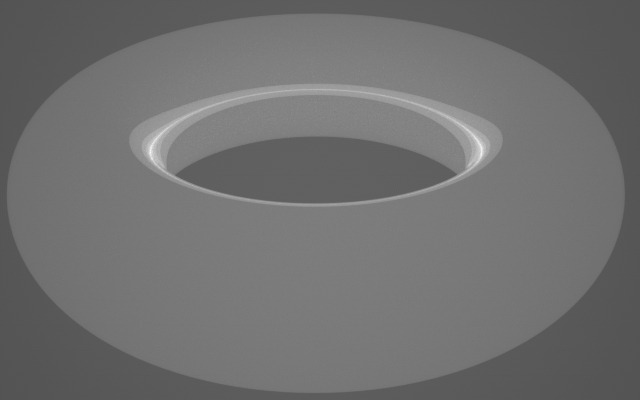- Tue Feb 03, 2015 3:03 pm
#385193
There are already several threads discussing the two blending modes for material layers and how to use the additive mode to produce glossy reflections. But most of these threads seem to center on questions concerning render speed and noise. My focus here is the question of physical realism, which, after all, Maxwell is all about.
Current best practice to produce glossy materials seems to be to stack a low-roughness additive layer on top of a high-roughness base layer. This way you get bright reflections while also preserving the brightness of the diffuse base layer. But this is not how actual physical materials behave, is it?
As I understand it, the additive mode adds the BSDF solution of one layer to that of another layer, thus increasing the amount of reflected light – potentially above the amount of incident light. This would mean, that in some situations (e.g. self-reflections) the reflection of a light source could appear brighter than the light source itself, which of course is not physically possible.
I’m aware that V3 now limits the total amount of energy for added layers to at least avoid numerical problems that can cause render defects. But despite this, strictly speaking, is it not true that any material that uses additive layers will NOT produce results that can be called physically correct?
The user manual (even V3) seems to confirm this by explaining how additive layers introduce bias and that all characteristics of a homogeneous material should be contained within a single layer. It further seems to imply that layers are really only intended be used to create composite materials where two or more materials are mixed together via masks. Is this information outdated?
I ran into this question while trying to reproduce a glossy white leather material from photographic reference. Is there a physically correct way to produce such a material without resorting to the additive layer technique?
Any thoughts on this are appreciated.
Current best practice to produce glossy materials seems to be to stack a low-roughness additive layer on top of a high-roughness base layer. This way you get bright reflections while also preserving the brightness of the diffuse base layer. But this is not how actual physical materials behave, is it?
As I understand it, the additive mode adds the BSDF solution of one layer to that of another layer, thus increasing the amount of reflected light – potentially above the amount of incident light. This would mean, that in some situations (e.g. self-reflections) the reflection of a light source could appear brighter than the light source itself, which of course is not physically possible.
I’m aware that V3 now limits the total amount of energy for added layers to at least avoid numerical problems that can cause render defects. But despite this, strictly speaking, is it not true that any material that uses additive layers will NOT produce results that can be called physically correct?
The user manual (even V3) seems to confirm this by explaining how additive layers introduce bias and that all characteristics of a homogeneous material should be contained within a single layer. It further seems to imply that layers are really only intended be used to create composite materials where two or more materials are mixed together via masks. Is this information outdated?
I ran into this question while trying to reproduce a glossy white leather material from photographic reference. Is there a physically correct way to produce such a material without resorting to the additive layer technique?
Any thoughts on this are appreciated.


